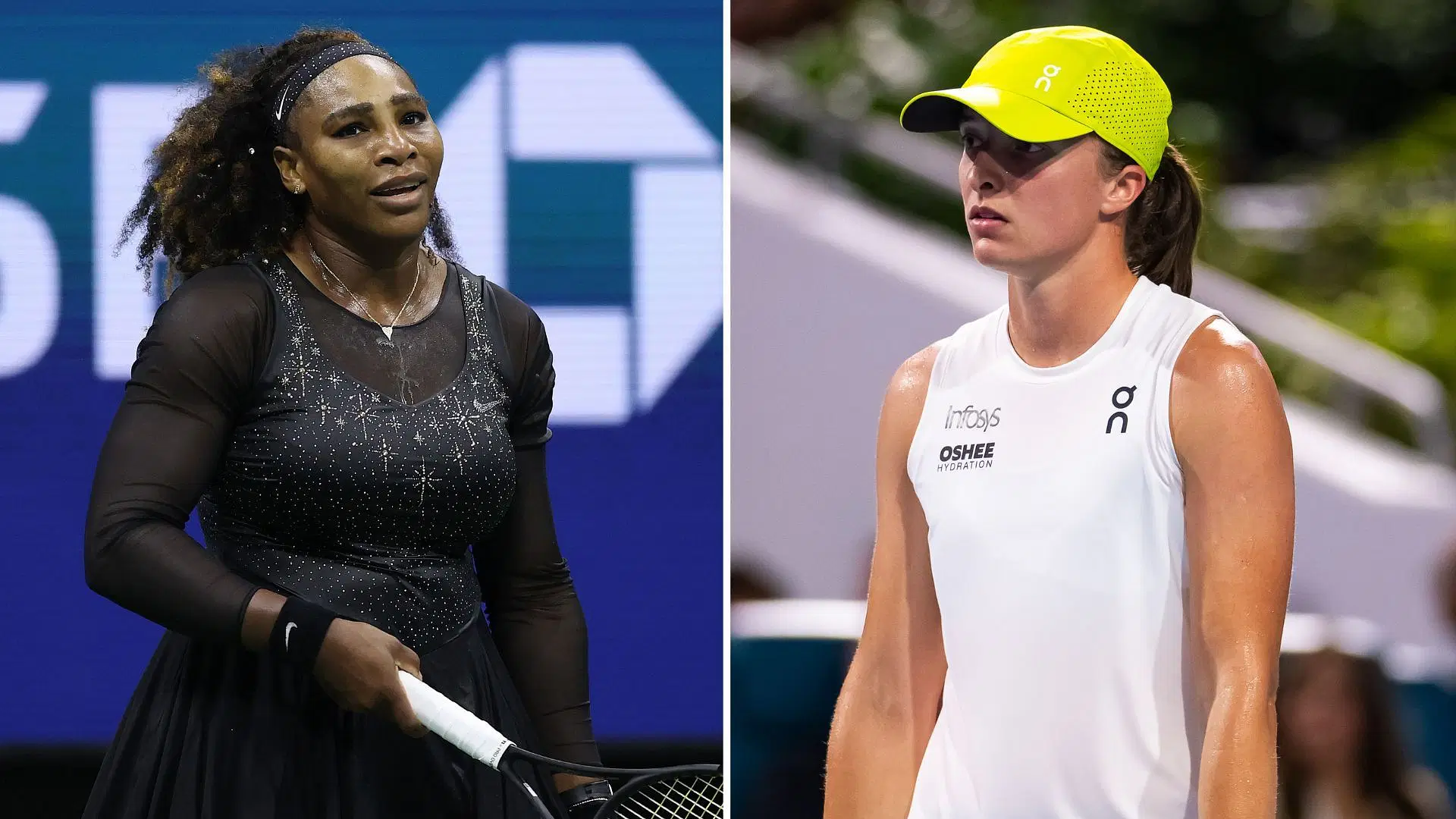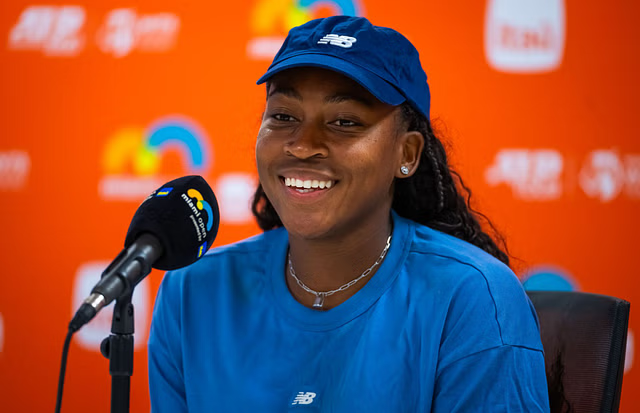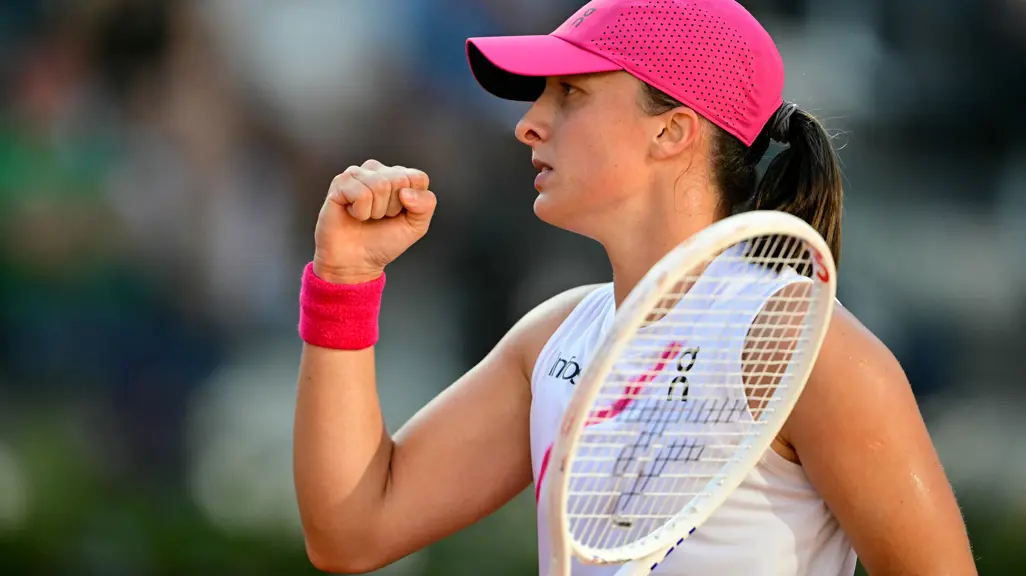Introduction
Iga Swiatek has dominated women’s tennis in recent years, cementing her place as a four-time Grand Slam champion and former world No. 1. However, not everyone is convinced that her game is flawless. In a recent bold statement, Serena Williams’ ex-coach, Rick Macci, claimed that one of Swiatek’s key shots is “so predictable” and has “not developed at all.”
This critique has sparked debate among tennis analysts, fans, and even Swiatek’s rivals. Is there merit to this claim, or is it just another attempt to poke holes in the dominance of one of the most consistent players on the WTA Tour? Let’s dive deep into the argument, break down Swiatek’s playing style, and see if her game really lacks the evolution it needs to maintain her reign at the top.

The Strengths of Iga Swiatek’s Game
Before we dissect the criticism, it’s important to acknowledge what makes Swiatek such a formidable force on the court.
1. Heavy Topspin Forehand
Swiatek’s forehand is her signature weapon, modeled after Rafael Nadal’s topspin-heavy style. This shot gives her excellent control, forcing opponents deep behind the baseline and making it difficult for them to counterattack.
2. Speed and Court Coverage
Her incredible footwork allows her to chase down seemingly impossible shots, turning defense into offense with ease. Swiatek’s ability to slide into her strokes, especially on clay courts, is a skill that very few players can match.
3. Mental Toughness and Resilience
One of the biggest reasons for Swiatek’s rise to the top is her mental toughness. Unlike many young players who struggle under pressure, Swiatek thrives in high-stakes matches, often steamrolling opponents in finals with her aggressive yet composed mindset.
4. Clay-Court Mastery
Swiatek’s dominance on clay courts is undeniable, winning multiple French Open titles with her unique ability to move and dictate play on the surface.
These strengths have propelled her to the top of the WTA rankings, but as Rick Macci pointed out, there may be weaknesses that could be exploited.
What is the ‘Predictable’ Shot in Question?
Rick Macci specifically called out Swiatek’s forehand, claiming that while it’s powerful, it is too predictable and has not evolved.
1. Repetitive Shot Patterns
One of the main criticisms is that Swiatek relies too heavily on the crosscourt forehand. While it is an effective weapon, elite players have started to anticipate it, cutting off angles and neutralizing her attack.
2. Lack of Variety Under Pressure
Macci suggests that Swiatek doesn’t mix up her forehand enough, making it easier for opponents to adjust. Unlike players like Ash Barty or even Serena Williams, who had multiple variations of their shots, Swiatek often sticks to the same patterns.
3. Struggles on Faster Surfaces
While Swiatek is nearly unbeatable on clay, she has had difficulties replicating the same dominance on hard courts, especially when playing against flat hitters like Aryna Sabalenka or Jessica Pegula. If her shot-making is predictable, it could explain why she occasionally struggles against aggressive opponents who rush her game.
Is There Truth to the Criticism?
To determine if Macci’s assessment is fair, let’s analyze how Swiatek has performed against different opponents and what the stats say.
1. Recent Matches Show Opponents Adapting
In recent months, Swiatek has faced more challenges, especially from players who rush her with power. In some matches, she has been unable to dictate play as effectively, suggesting that opponents are finding ways to read her patterns.
2. Struggles Against Big Hitters
While Swiatek dominates players who allow her to control rallies, she has struggled against players like Sabalenka and Elena Rybakina, who hit through her heavy topspin and expose her lack of variety in attacking positions.
3. Statistical Breakdown
A deeper analysis of Swiatek’s winners versus unforced errors on hard courts compared to clay reveals a stark contrast. On clay, her high-spin forehand is devastating, but on faster courts, it sometimes lacks the penetration needed to hit through opponents.

How Can Swiatek Improve?
Despite the criticism, Swiatek is still one of the best players in the world. However, if she wants to maintain her dominance across all surfaces, she may need to make some adjustments.
1. Adding More Forehand Variations
If Macci’s assessment is correct, Swiatek could benefit from adding more slice forehands, flatter shots, and angles to her game. Players like Novak Djokovic have evolved their shot selection over time, and Swiatek may need to do the same.
2. Improving Net Play
One way to make her game less predictable is to incorporate more net play. If she can develop confidence in finishing points at the net, she could keep opponents guessing and prevent them from settling into patterns.
3. Tactical Adjustments Against Big Hitters
Instead of engaging in baseline rallies against power players, Swiatek might consider using drop shots, change-of-pace shots, and more variety in her serve placement to keep opponents off balance.
Swiatek’s Response to Critics
So far, Swiatek has not directly responded to Macci’s comments, but history suggests that she is not one to shy away from challenges. She has continuously improved her game since turning pro, and if her shot predictability is indeed an issue, there’s no doubt she will address it.
Quotes from Swiatek on Improvement
In past interviews, Swiatek has spoken about her desire to evolve her game. She has mentioned working on her serve, adjusting to different surfaces, and building an all-court game. This suggests that she is well aware of the areas where she can improve.
Will Swiatek Continue to Dominate?
While Rick Macci’s comments have sparked debate, it’s important to remember that no player is perfect. Even legends like Roger Federer, Rafael Nadal, and Serena Williams faced critiques about their games at different points in their careers.
Reasons She Will Stay at the Top
- Work Ethic: Swiatek is known for her intense training regimen and focus on constant improvement.
- Mental Strength: Despite being young, she has shown the ability to handle pressure and bounce back from tough losses.
- Adaptability: If history is any indication, Swiatek will take this criticism as motivation and work to add more variety to her game.
Challenges She Faces
- Competition is Strong: With players like Sabalenka, Rybakina, and Coco Gauff improving rapidly, Swiatek will have to keep evolving.
- Game Adjustments: If she doesn’t diversify her shot-making, top players might continue to exploit her weaknesses.

Conclusion
Rick Macci’s claim that Swiatek’s forehand is predictable and hasn’t developed might hold some truth, but it’s not a definitive flaw in her game—yet. Swiatek has already proven she is one of the best in the world, and if she takes this critique as motivation, she could become even more unstoppable.
The real question is: Will she adapt in time to keep her throne, or will her rivals continue to find ways to neutralize her game?
Tennis fans will be eagerly watching her next tournaments to see if she makes adjustments. One thing is certain—Iga Swiatek isn’t done winning, and she isn’t done evolving.
Let us know in the comments: Do you think Swiatek’s forehand is too predictable? Will she make the necessary improvements? 🚀🎾


